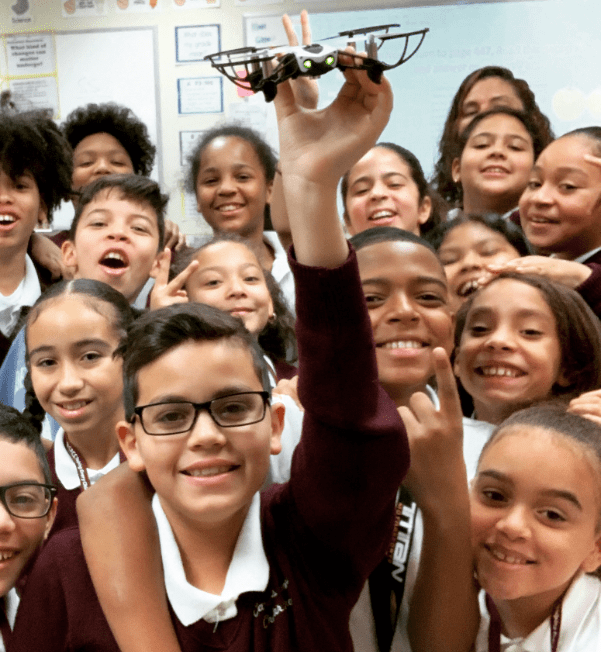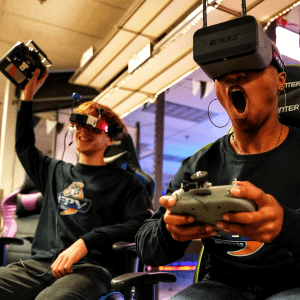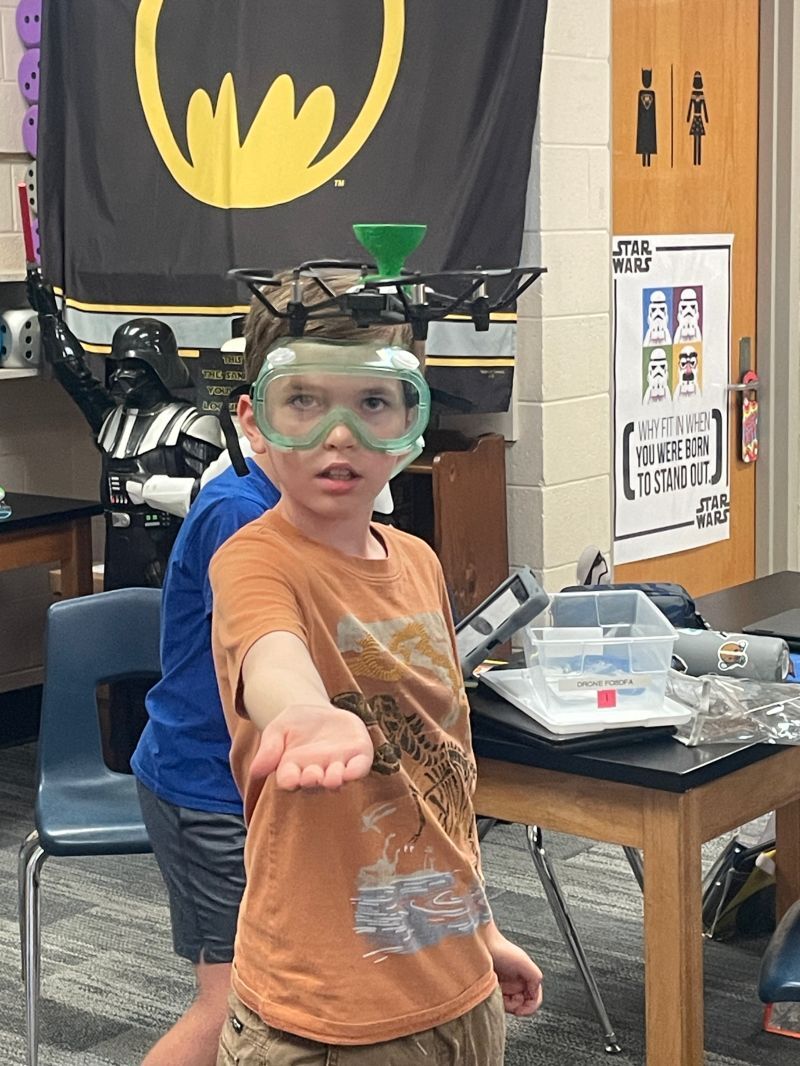As a math teacher, I’ve always wanted some tool that gives immediate visual evidence when calculations are incorrect – beyond the screen of a calculator. Imagine my surprise when I found that in a drone STEM program!
I’ve experienced STEM through several different avenues: robotics, coding, trampolines, hydroponics, art, and more. Each of these did a good job of all but one aspect of STEM – the tech was great but had a weak science application, the engineering was solid but didn’t use much tech, the math was foundational but didn’t leave room for engineering design, the science was strong but didn’t tie in any math. A drone STEM program includes everything and even gives the visual confirmation of correct computations I’d been looking for.

For example, when a drone takes off it hovers at some height. If students engineer a code to make a drone fly through a loop in the air they first have to measure the hover height of the drone and then the height of the center of the loop. They must then choose the correct operation to find the distance between the hover height and the loop. This is a great problem for using subtraction to find a missing addend. If they miscalculate, don’t measure with precision, or convert their units incorrectly, the drone crashes into the loop or misses it completely. Students immediately see the results of their mistake, but they don’t yet know where the mistake is. They have to go back and evaluate their code, their calculations, and their measurements in order to make the technology work as it should. Then they have to redesign their code and test it again to see if it works. It’s an amazing process that naturally integrates the science of flying with math problem solving and the engineering design process using a new technology that has hundreds of applications in a wide variety of careers. This is STEM at its finest.
STEM in education fosters imagination, creativity, project management skills, and technology skills. Drones as a teaching tool for all of the above makes perfect sense in every educator’s lesson plans. Sure, drones can be seen as toys for the masses, or a photographer’s dream for aerial shots and new perspectives. However, drones are also important teaching tools. Combining drones with STEM blends theory with practice and opens up limitless possibilities for highly engaging classroom and after school experiences!
DRONES IN STEM:

Science: Drones illustrate several scientific principles and can be used to investigate them. One example is combined forces. In order for a drone to hover, it must create an upward force equal to the downward force of gravity. A hovering drone is the perfect illustration of the fact that balanced forces do not create motion.
Tech: Creating a code for a drone to autonomously fly a mission that solves a real-world problem results in failures before it results in success. It requires using several technologies within a design process to solve a problem and helps students develop a tolerance for failure and perseverance.
Engineering: The engineering design process can be employed during several critical points in a drone curriculum such as coding an autonomous flight path through an obstacle course, designing a unique drone feature, or inventing a way for a drone function to help solve a problem.
Mathematics: Rigorous mathematical computations can and should be incorporated into drone missions. One example is when students fly a certain distance, perform an action, and then repeat, or loop that process. Students must use multiplication to determine the total distance the drone will travel. Inversely, they can use division to determine how many times the process needs to be repeated to cover a given distance.
According to yetiacademy.com, “STEM occupations are projected to grow 8.8% by 2028, and healthcare occupations, which generally require a strong STEM background, are projected to grow even more. Meanwhile, non-STEM occupations will only grow 5%.” STEM is the future of our workplace, and our future leaders must be on track to secure these jobs. Not only can drones excite and engage students in STEM careers, the drone market itself provides an exciting STEM career field. The drone service market is projected to grow over 45% in the next 7 years.
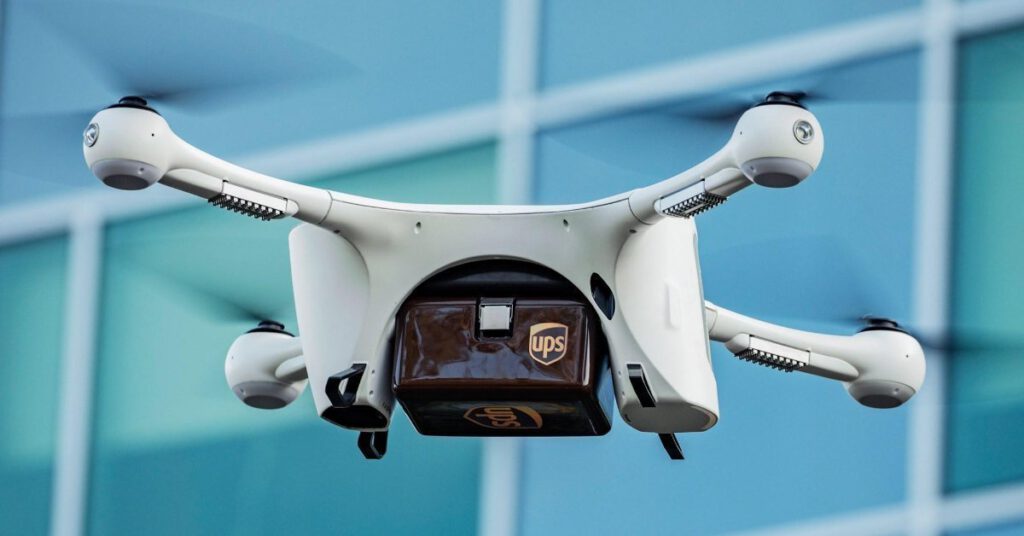
A-Z About Your Drone
Drones, defined as “ground based, submersible and unmanned aerial vehicles (UAVs)” offer numerous benefits to educators and students. The more easily digestible format of drones allows students to apply complex mathematics and scientific concepts with real-time results. Instead of being discouraged or losing interest, students’ imaginations are piqued and their creativity flows, and when the creativity flows problem solving is at its best.
Practical Application
Let’s look at a practical example of how drones can be used in the classroom; medicine delivery! Much of the world’s population lives in remote, rural communities without regular access to essential healthcare services. People living in these communities face dire health challenges, with poor infrastructure and failing ground transport networks often resulting in a lack of supplies and care. Drones are able to quickly and efficiently bypass ground transportation challenges. A deployment of a life-saving anti-venom for a snakebite victim might typically take hours, if it were to reach the patient at all. Autonomous drones can distribute this life-saving medicine with pin-point accuracy within minutes.
Using this scenario as the backdrop to an in-class challenge, we have created the Rwanda Medicine Delivery challenge. We have the children work together to create an obstacle field representing the rural landscape. This can be done using hoops, chairs, desks, or other buildable objects. In our Drone Legends STEM programs we use construction builder sets, but most readily available classroom items will suffice. The key is to create an imaginary landscape within which the students will have to navigate their drones to deliver medicine.
Many classroom drones, such as the Ryze Robotics TELLO can be programmed using a block coding application like DroneBlocks (both of which we use exclusively in our curriculum),to perform autonomous flight missions. We have the students work in teams to measure, plan, code, and launch their life-saving medicine delivery missions. Adding a time constraint heightens the sense of urgency and gamifies the lesson to keep the students engaged.
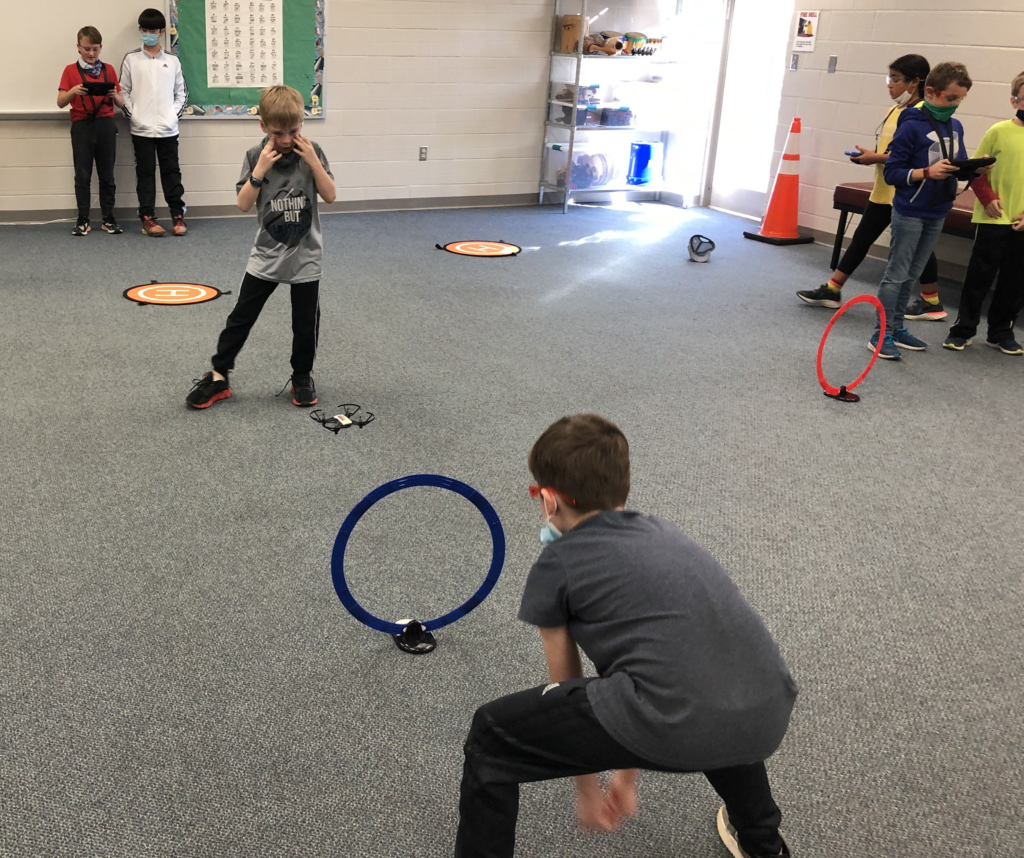
There are countless other real-world applications for drone-themed missions, such as mining, agriculture, search and rescue, and much, much more.
Everyday Life
Drones are more than useful tools for students and educators to incorporate complex topics. They have a multitude of everyday uses. And, drones can actually save lives.
During disaster response, drones can be used in multiple ways, including locating victims and helping to survey damage and assess conditions without risking the lives of the rescue teams. Building on this idea, drones also assist law enforcement officers in their response and search for missing persons.
Drones can also provide a way to safely inspect infrastructure. Imagine the logistics and risks to workers who must inspect a bridge or tall building. While using drones, “scaffolding, cranes, or harnesses are not required. Just deploy the system to assess the structure’s condition remotely.”
Aside from life-saving technology, drones can get you your pizza very fast! Domino’s has used drones to speed up delivery times.
Interested in wildlife and preservation? “Wildlife, especially endangered species, could be monitored from a distance using drones.” This technology again allows for a safe distance without sacrificing research and analysis. Save the planet with drones!

Finally, any sports fan will cheer for drones and their ability to stream advanced angles and display plays in top-form. Even in the Olympics, drones were used to help viewers maximize their experience.
Using a comprehensive STEM curriculum is critical to the success of drones in STEM and it does not have to be complicated to execute. Read the testimonials from some of our teachers:
“I was afraid that I would be very confused, but they [Drone Legends] had everything planned perfectly and explained it well. My staff that I am going to have teach it is SUPER excited after today’s training! I think our kiddos will love it!”
“I really love the books and lesson plans they’ve created for us. Easy to follow for our staff.”
“I enjoyed it, I was surprised I was able to actually fly the drone. I know our big kids had a lot of fun with it last year, and I’m looking forward to it this coming year!”

As our educators’ testimonials above confirm, STEM education transcends school subjects and is immensely important for general education. STEM thinking shapes the way students approach and consider complex challenges. Incorporating science, technology, engineering, and mathematics into student’s everyday thinking will prepare them to help address the challenges the world faces today.
Vonae Tanner
Sr. Director Curriculum and Learning
Drone Legends

